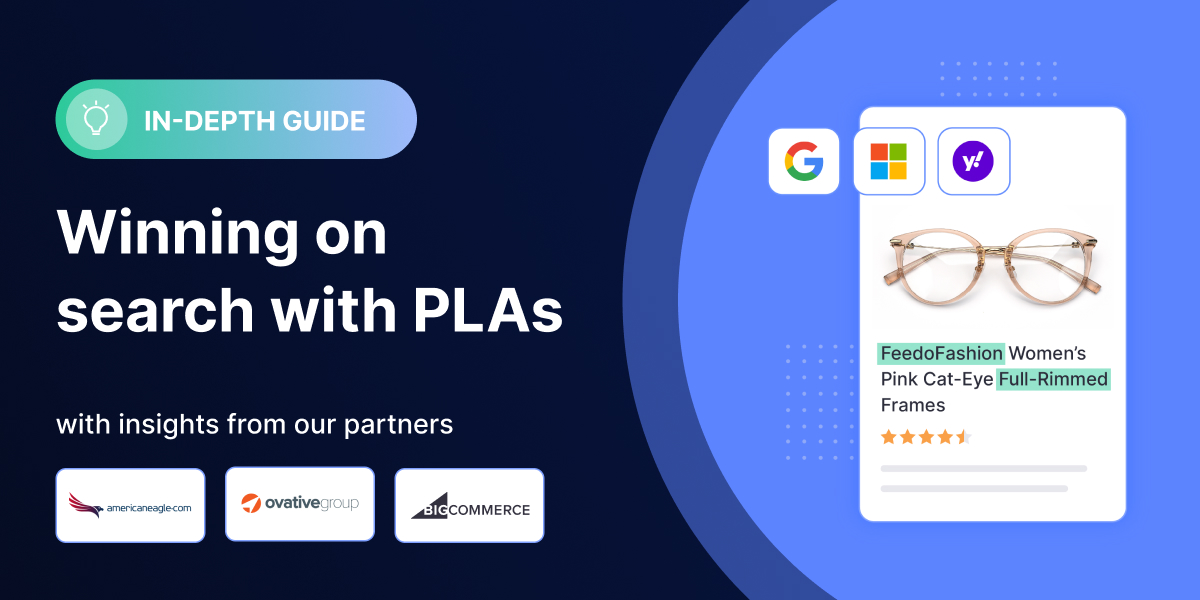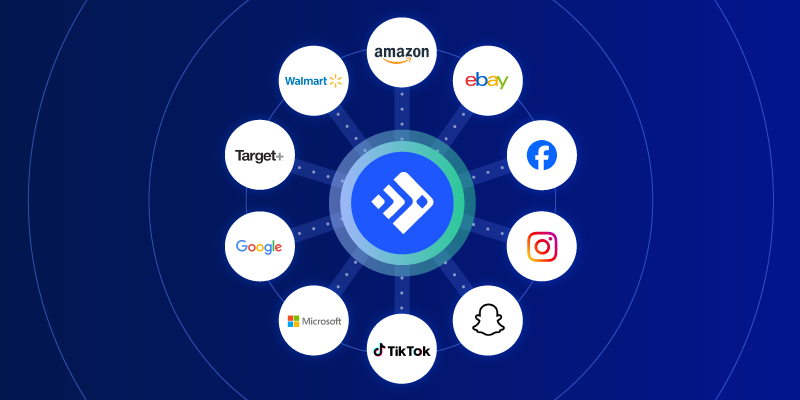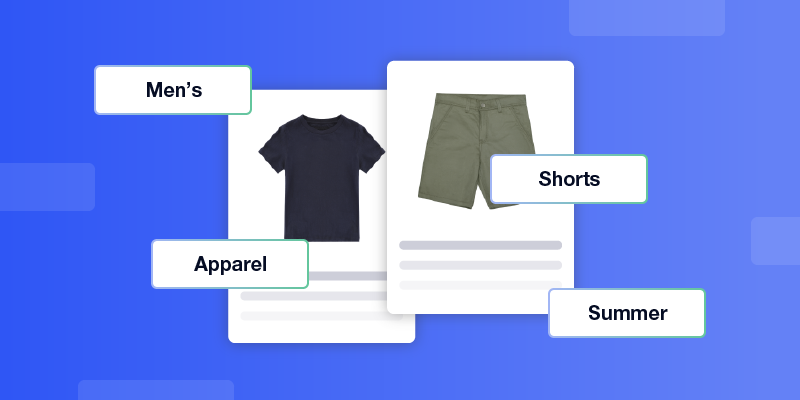When brands and retailers look to sell more products online, they often start by advertising on the biggest search engines in the world—Google, Microsoft (Bing), and Yahoo. These channels have shopping ads programs to help you promote the right products to customers who are searching for something specific. Individual product ads are called product listing ads (PLAs).
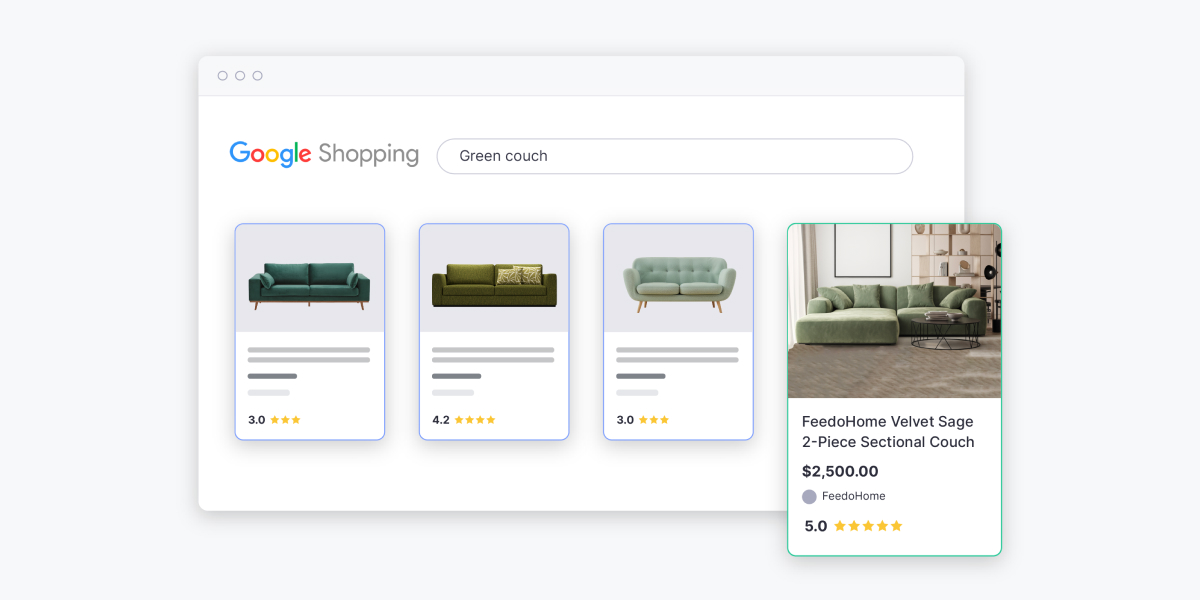
With a strong shopping channel strategy, you can drive traffic to your website, strengthen your brand presence, and ultimately sell more products. Combine this with an omnichannel approach that incorporates marketplace selling, social commerce, and other channels, and you can tap into the full potential of your ecommerce growth.
So how do you win on shopping channels with PLAs?
We’ve broken it down into three parts: data, strategy, and branding. Mastering these pillars helps you optimize your business on shopping channels for the best chance to succeed.
Keep reading to get combined wisdom from specialists at Feedonomics, BigCommerce, and two of our digital marketing agency partners—Americaneagle.com and Ovative.
This resource is part of a series about how to win in ecommerce on different channel types:
Stay tuned for blogs about social commerce, affiliate, and SMS and email marketing channels in the coming weeks.
How to win on shopping channels
Of all the channels that offer shopping ad campaigns, Google is the whale and widely accepted as the starting place for businesses trying to improve their ecommerce reach. Remember, a tip for Google Shopping is usually applicable to Microsoft and Yahoo as well, but we’ll call out any unique considerations as we go.
“In previous years, having placements in Google Shopping was a competitive edge—now it’s a need. If you are an ecommerce business, you have to have placements on Google Shopping to remain competitive.”
Like many ecommerce channels, Google allows users to submit product data to its platform, Google Merchant Center (GMC), where it can be managed and connected to ad campaigns and other programs.
Bonus tip from our feed specialists:
Some features on Bing differ from Google. For example, subscription services can be advertised on Bing, but not on Google. Bing also doesn’t automatically exclude out-of-stock products like Google does when serving ads.


There are several ways to upload product data to ads platforms, including manually listing products one-by-one, uploading spreadsheets, or connecting your source data through a regularly updated product feed.
No matter what you choose, the principles of success are still the same. You need to be intentional about your strategy, improve the quality of your data to support your efforts, and make sure your approach creates a positive brand impression.
Start with what your brand represents
One of the biggest keys to success is having a clear understanding of your business, customers, and goals. This informs your ad strategy.
You should be intentional about how you approach your ecommerce endeavors. For example, are more of your customers shopping on desktop or mobile? Have you defined your target audience and determined if it makes sense to pay for search placements instead of video-focused social media campaigns?
“There are so many variables within search engines—algorithm changes, platform changes, search experience changes—but the one constant is knowledge of the business and customers. Having that strong understanding of not only who is searching, but also when and why they are searching, will allow the advertiser to have more control over the visibility of their ads.”
In addition to understanding who your customers are, you should care about the impression you’re giving. In a nutshell, you need to instill trust in your brand by being professional and making it easy to shop with you.
Nic Fowler, Digital Marketing Manager at BigCommerce, shares some standards to uphold if you want to create a positive brand presence:
1. Ensure the user experience is straightforward.
It should be easy for customers to find what they’re looking for, understand what you’re selling, and complete the purchase. Typically, when people are searching for something, it’s because they’re usually either thinking about converting or they’ve already started that process of researching something.
As a marketer, focus on your keyword strategy, ad copy, and making sure the landing page is optimized for whatever you’re trying to target. Utilize negative keywords to make sure you’re not showing up for searches that aren’t relevant. For PLAs, it really comes down to improving the SEO of the catalog, and then just making sure that everything on the front end aligns with everything on the back end. Keep your prices and inventory up-to-date, so your ads are accurate.
2. Be consistent with your creative across channels.
This is a pretty important one. Make sure that your product images are the same across each channel. If your listings are consistent, it becomes easier to attempt a remarketing strategy. For example, people will research a product on Google, and then they’ll buy it on Instagram because they saw an ad for it. It’s harder nowadays, but you still need consistent creative to give your campaigns the best chance.
3. Stay in control of your ad placements.
You don’t want your brand to show up on sketchy websites or be associated with things that are antithetical to your branding. If you see that there’s a lot of scammy bot traffic coming to your site, you can usually block those IPs, or you can block those bots altogether, which is usually a service that you have to pay for, because with Google, you only get 500 or so that you can block.
Also, pay attention to your placements on Google’s Display Network because there are a ton, and that can go south really quick if you’re not careful. You can spend a ton of budget on just bad placements.
Be intentional with your strategy
Use custom labels with performance data
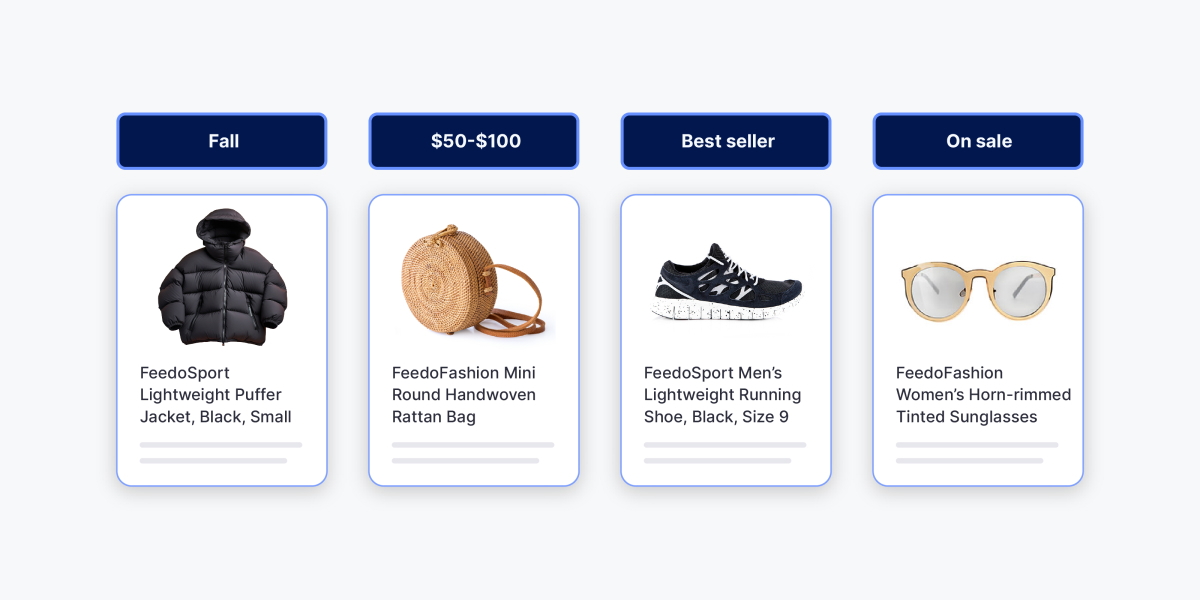
With rising costs and more businesses advertising on Google than ever, taking control of your data is important if you want better returns.
How you segment your campaigns can have a big impact on how effective your spend is. Are you structuring your campaigns around specific performance metrics, or just segmenting groups for the sake of segmentation?
“We are moving away from campaign segmentation built around product category reporting and are focusing instead on strategic segmentation based on business outcomes like profit margin and new-customer or future-customer value.”
Here’s how advertisers can enable more granular segmentation:
- Import and add your performance data to your product feed from Google Analytics or another source.
- Use SKU reporting to identify which products are “vampires” (items that are costing a lot and not converting) or “zombies” (items with no clicks), and use the “excluded_destination” field in your Google feed to stop advertising them. You may choose to still show them in Google’s free listings program.
- Identify which products are most profitable, are most effective for new customer acquisition, or sell the best and improve brand recognition.
- Use custom labels in the product feed to group products by the criteria you choose.
- Build campaigns around those custom labels and bid according to your goals.
Explore different campaigns types to stay competitive
Performance Max
One of Google’s biggest recent developments on the advertising front is the automated Performance Max campaign. This campaign type uses smart bidding and targeting tied to goals set by the marketer, and—compared to a Standard Shopping campaign—utilizes a wider range of ad formats that appear in more places across Google’s network.
“Not testing new campaign types leaves significant opportunity on the table when your competitors leverage those features. However, you also cannot “set and forget” your campaigns and must monitor performance very closely and provide the right data inputs to avoid wasted ad spend on non-incremental placements.”
Although Google takes the reins for key aspects of your campaign, our partners at Ovative and Americaneagle.com both recommend staying highly involved in your Performance Max campaign management.
Grebner recommends structuring campaigns in creative ways around different product groups like brand, product type, and performance metrics. Automation can save time, but a marketing expert should keep control over the general campaign to maintain quality.
Local inventory ads
For brands and retailers with physical storefronts, local inventory ads (LIAs) can show online shoppers when a product is in-stock at a location nearby. Advertisers can even highlight if curbside pickup is an option. Tapping into LIAs allows you to showcase your in-store branding and drive home an exceptional customer experience, helping you build brand loyalty and recognition, save media spend, and ultimately drive brand growth.
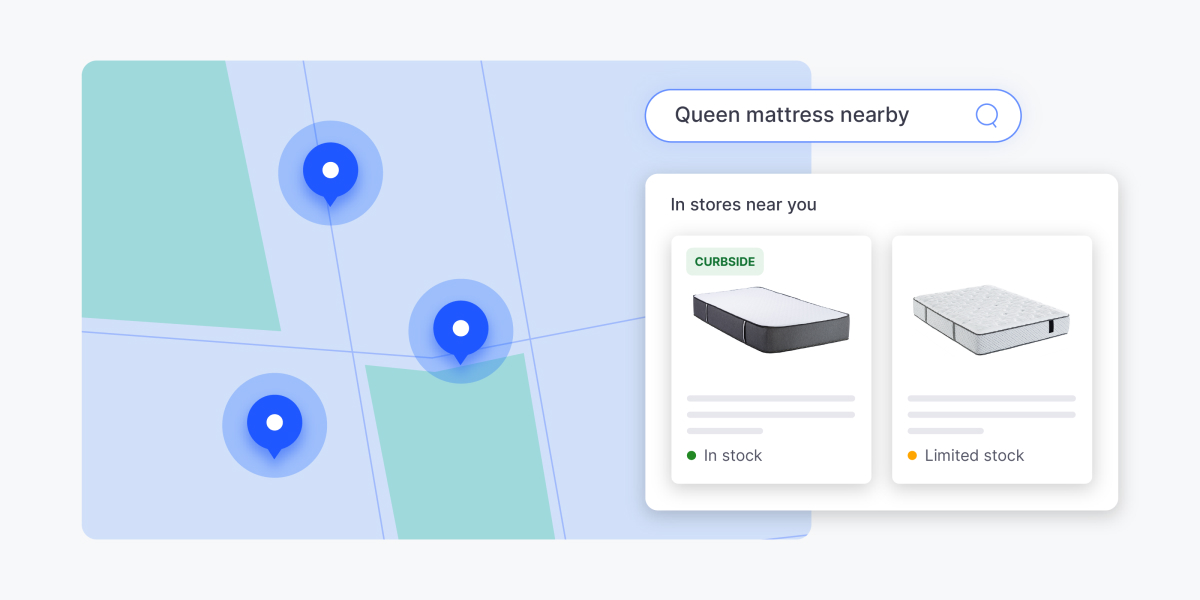
“Location targeting allows you to target customers with higher intent to convert and support a more engaged shopping experience.”
Microsoft and Google both have effective local inventory ad programs for retailers to tap into. Don’t neglect these LIA best practices if you want to get the most out of your efforts:
- Use geo-targeting to focus ads on specific locations where your target audience is located.
- Incorporate local keywords and phrases that reflect how people search in your area.
- Optimize and regularly update your Google My Business listing to improve local search visibility.
- Use localized ad extensions to provide users with your address, phone number, and directions.
Bonus tip from our feed specialists:
One common obstacle for sellers is store code verification in Google My Business. If the store codes are registered, but you are still seeing an error in GMC, opening a support ticket with Google will trigger a review and often yield a resolution. Sometimes the issue is that Google My Business has not been linked to GMC.

Optimize your data for better results
By providing more high-quality data, you help optimize your listings for conversion and keep pace with consumer behavior. Just read what our experts have to say about how shopping is changing on search channels.
“Search engine result pages for product-based searches on Google have evolved to be more like a typical ecommerce website experience, with the ability to filter products by different criteria. This puts more weight on the data that advertisers use in product feeds.”
“We are seeing continued growth in paid and organic traffic landing on product detail pages as Google continues to make transactional SERPs more shopping oriented. It is important to not only ensure that the product feed powering your paid and organic listings has rich and optimized product data, but you also optimize the product detail page itself for both Google to crawl and to drive strong conversion rates.”
Unlike text-based search ads, PLAs do not rely on keyword bidding to show up for different searches. Instead, the data in your product catalog is used to create relevant matches between your product ads and customer queries. And because online shoppers can’t examine your products in person, they also rely heavily on your product data to make informed decisions.
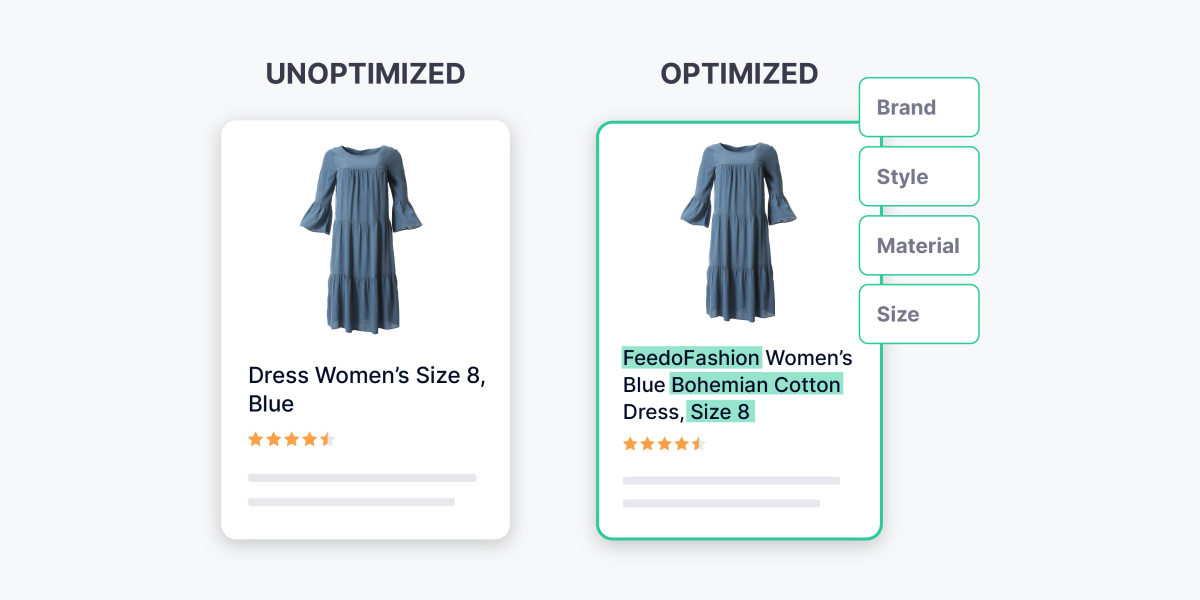
Optimizing and updating your product feeds is a great way to improve the performance of your ads. You need accurate, granular product categorization, consistent and well-structured titles and descriptions, and full product listings that not only meet the minimum requirements, but also include recommended data.
Categorize your products with more granularity
Google relies heavily on the Google Product Category attribute to display products to searchers. This attribute should show the taxonomy of your product with increasing granularity, such as “Furniture > Cabinets and Storage > Dressers,” so your products can be matched more precisely to a user’s search and filtered in the results as well.
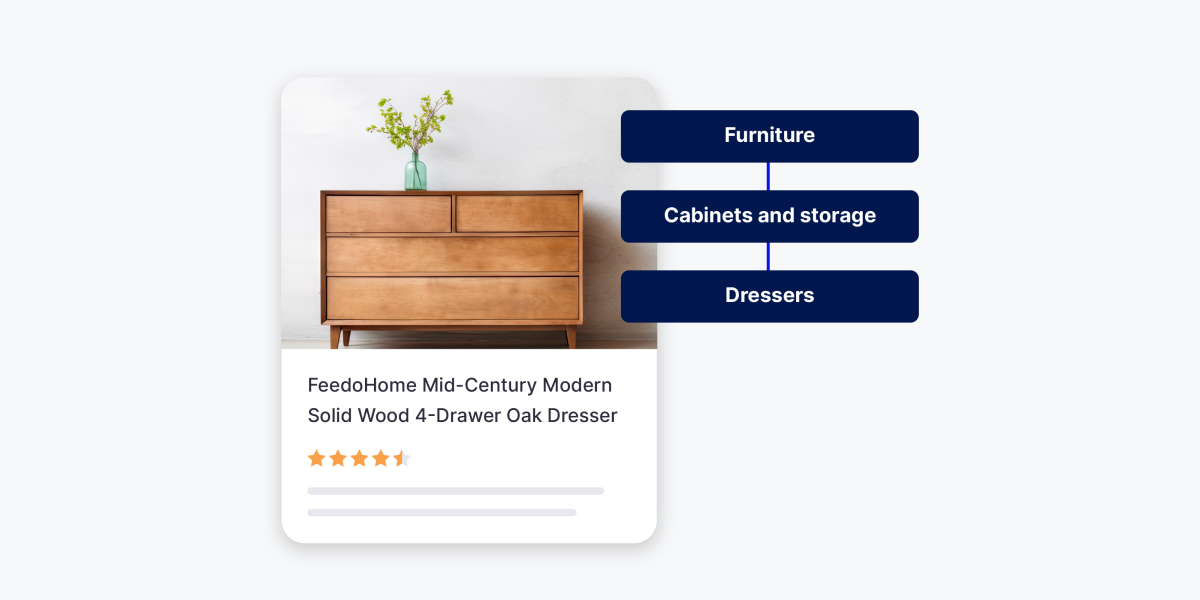
A higher level of detail also ensures accurate taxation of your products, prevents them from being flagged for missing attributes from the wrong category, and allows you to build targeted campaigns around your products.
Improve product titles
Alongside product images, customers notice your product titles first, so it’s essential to craft them with care.
There are some general best practices that apply to all product titles online:
- Start or end with your brand name.
- Use professional and correct grammar.
- Avoid foreign and gimmicky characters.
- Exclude promotional text like sales prices or dates.
- Highlight the most important details first.
Take a look at our Google product title examples to see how your title structures can vary by product category.
It’s important to test out different title structures and keywords. For example, you might find that putting your brand name at the beginning of your titles is not as effective as putting it at the end. A/B testing optimizations to your catalog is the best way to establish a data-driven strategy for your listings.
Titles should be descriptive and include key details like color, size, and material, as well as features like “reversible,” “gluten-free,” or “washable.” Integrate commonly searched keywords naturally for better visibility. Detailed titles not only improve the relevance of your ads, but also enhance their professionalism and trustworthiness.
Go beyond the basic data requirements
Before you can list products on any shopping channel, you need to meet the basic data requirements. But if you want your listings to stand out, populating the optional and recommended attributes in your product feed can go a long way.
More data helps Google match your products with the right customers and aids shoppers in their purchasing decisions. Use the [product_highlight] and [product_detail] attributes to provide detailed product information to Google and shoppers.
These attributes enhance your product feeds with valuable information. According to Google, the [product_detail] attribute in particular improves Google’s ability to display your products based on search queries.
Bonus tip from our feed specialists:
The [product_detail] attribute on Google is helpful if you have a lot of unique specs you want to present in a table format. For example, if you’re selling car parts, you may want to specify the year, make, model, passenger or driver side, size, and other key attributes of the part.

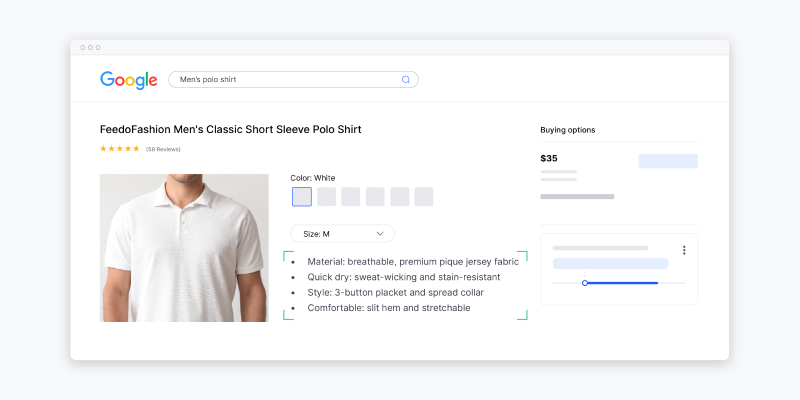
The [product_highlight] attribute, another optional feature, appears as a short bullet-point list below the product description. Use four to six highlights, each up to 150 characters, to convey key product information quickly. Product highlights should be concise and avoid SEO keywords. Focus solely on your product without comparing it to competitors or discussing your brand.
Leverage a feed management platform
“It’s important to have better data than your competition. We utilize feed tools to be agile in the way we are testing performance of titles, descriptions, custom fields, and more to gain an edge over the competition.”
With the help of a feed management platform like Feedonomics, you can import source data from anywhere and combine it within the platform to create unique exports for every channel. When you’re ready to expand to new channels, you can use the pre-built integrations to avoid tons of development.
By utilizing custom data transformers, you can turn your source data into an optimized feed at scale.
For example, let’s say you’re trying to improve the product titles of your ads for a collection of Merino wool sweaters, but the product names on your website are more aesthetic than descriptive, like “The Adventurer” or “Forest Nomad.” You could create a custom data transformer to parse the term “Merino wool” from your descriptions, as well as the sizes, gender, and color from other fields to create better titles.
You can also use a feed management platform to prepare your listings for A/B tests. In the platform, it’s easy to create random and representative groups for your test, manipulate a single variable, like using the term “gender-neutral” in the titles for one group and “unisex” in the titles for another. Then you can apply custom labels to identify your two groups and monitor the performance of those ads groups.
Bonus tip from our feed specialists:
Per Yahoo’s product specs, descriptions can be 4,000 characters long, but only the first 20 to 150 are initially displayed, so prioritizing keywords at the beginning of the description may be a good A/B test.

One of the most important reasons to rely on expert help is to resolve listing errors faster. Errors can be triggered by anything from incorrectly formatted data to price mismatches between your ads and website. The longer your products are disapproved, the more potential revenue you can lose.
Feedonomics provides 24/7 support from feed specialists and keeps your data up-to-date across all channels to improve your account health.
What’s next for shopping on search channels?
As you tackle the challenges of today and seek to improve your business, you should also be laying the groundwork to solve the ecommerce challenges of tomorrow. We asked the experts to weigh in on what they think is important to plan for.
Increased use of AI and machine learning
AI is progressively getting more decision-making power in ecommerce. From Google’s newest campaign features and AI Search Mode to the use of chatbots and automated search results, it’s increasingly important to have human oversight and ensure that quality is consistent for all users.
First-party data is key
Stricter privacy regulations will impact data collection and targeting, emphasizing the need for first-party data strategies. Loyalty programs, newsletter signups, and emailing discount codes can all be great ways to have customers opt-in to data sharing. The key is to provide value to customers who are willing to be more connected to your brand, but beware of becoming a discount-focused brand.
Product listing ads FAQ
What are Google Product Listing Ads and how do they work?
Google Product Listing Ads (PLAs) are a type of pay-per-click (PPC) Google Shopping ad that appears in Google Search results and the Shopping tab. They showcase a specific product with a product image, price, and merchant name. These ads pull data from a product data feed in a Merchant Center account and are triggered by search terms relevant to the product.
What makes Google Product Listing Ads unique?
Google Product Listing Ads (PLAs) are unique compared to other Google ad types because they focus on visual product discovery.
Unlike standard Google Search Ads, which rely on keyword targeting and text descriptions, PLAs use a product feed from Google Merchant Center to showcase product images, titles, prices, and store names directly in search results. This visual format makes them highly engaging and effective for ecommerce businesses, as potential customers can see product details before clicking the ad.
Another key difference is that PLAs are automatically triggered based on product data rather than manual keyword selection. Google uses the information in a retailer’s product feed—such as product title, description, GTIN, SKU, and category—to match ads with relevant search queries. This automation simplifies campaign management while ensuring ads appear for highly relevant searches.
How can I improve my click-through rates (CTR) for Google Product Listing Ads?
Improving click-through rates (CTR) involves optimizing various aspects of your ads, such as:
- Using high-quality images to make your products stand out
- Writing clear and keyword-rich product pages with detailed information
- Structuring your Google Ads account efficiently with well-organized ad groups
Why is a Merchant Center account important for Google Shopping ads?
A Merchant Center account is essential because it allows businesses to upload and manage their product data feeds, ensuring that their products appear correctly in Google Search and Shopping ads. Keeping product listings updated with accurate pricing, availability, and descriptions is crucial for maintaining ad performance and can be done at scale through a product feed management platform like Feedonomics.
What are the best bidding strategies for Google Product Listing Ads?
There are several bidding strategies you can use for your PLA campaigns. Manual CPC (cost-per-click) allows direct control over the maximum amount you could pay for each click, while automated bidding strategies, such as Target ROAS (Return on Ad Spend) or Enhanced CPC, use AI. Structuring your Google Ads account with well-segmented ad groups can also improve bid efficiency and maximize ROI.
How do you connect your online store to Google Shopping?
To connect your online store to Google Shopping, you need to set up a Google Merchant Center account and link it to your ecommerce platform.
Most major ecommerce platforms like BigCommerce, Shopify, and WooCommerce have direct integrations with Google Ads. For other platforms, you may need to use an API or third-party app.
Can you use Google Product Listing Ads to drive sales to your online marketplace listings?
If you sell on marketplaces like Amazon, eBay, Walmart, or Etsy, driving traffic directly to those listings via Google Shopping Ads is typically not allowed because:
- Google requires you to have ownership of the website you’re advertising.
- The product landing page must match Google’s policies (e.g., checkout should happen on that page).
- Marketplaces usually run their own Google Shopping campaigns instead of allowing individual sellers to do so.
Learn how Feedonomics can help support your advertising strategies.

Mario is a senior content marketing manager based in Texas. He enjoys solving problems, learning about new ecommerce tech, and breaking down complex topics into useful tips for readers.
